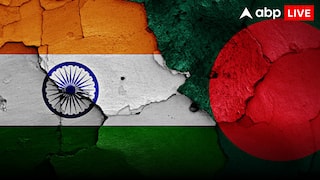'A Matter Of Pride That It's Purely Indigenous': Union Minister Jitendra Singh On SII's Cervical Cancer Vaccine 'CERVAVAC'
Jitendra Singh also said that CERVAVAC, if made available, especially for women, the difficulty they go through due to cervical cancer can be done away with.

Serum Institute of India (SII)'s Director, Government and Regulatory Affairs, Prakash Kumar Singh, presented India's indigenously developed quadrivalent human papillomavirus (qHPV) vaccine 'CERVAVAC' before Union Science and Technology Minister Jitendra Singh at his residence on January 26, 2023. CERVAVAC is a vaccine against cervical cancer, and developed by the Department of Biotechnology and SII, a Pune-based pharmaceutical firm.
Singh said it is "a matter of pride" that the vaccine is "purely indigenous". He also said that CERVAVAC, if made available, especially for women, the difficulty they go through due to cervical cancer can be done away with.
Delhi | Serum Institute of India (SII) Director Prakash Kumar Singh presented the made-in-India HPV vaccine Cervavac, for cervical cancer, before Union Minister Jitendra Singh at his residence today. pic.twitter.com/ukyRlnDOsg
— ANI (@ANI) January 26, 2023
SII launched CERVAVAC on January 24, 2023, on the occasion of India's National Girl Child Day. January is also Cervical Cancer Awareness month.
ALSO READ | India Launches Bharat Biotech's iNCOVACC, World's First Intranasal Covid-19 Vaccine: All About It
In India, the second most frequent cancer among women aged 15 to 44 years is cervical cancer. Most cervical cancers are caused by the human papillomavirus, and are sexually transmitted.
CERVAVAC has demonstrated a robust antibody response against all targeted HPV types, and in all dose and age groups. The response is nearly 1,000 times higher than the baseline.
The scientific completion of the vaccine was announced in September, 2022.
What Are HPV Vaccines?
HPV vaccines protect against infection caused by human papillomaviruses (HPV), which represent a group of more than 200 related viruses. Of these, more than 40 are spread through direct sexual contact. As many as two HPV types cause genital warts, and about a dozen HPV types can cause certain types of cancer, namely cervical, oropharyngeal, vulvar, vaginal, penile, and anal cancers.
According to the US National Institute of Health's (NIH's) National Cancer Institute, three vaccines that prevent infection with disease-causing HPV are currently being marketed in many countries throughout the world. These are Gardasil, Gardasil 9, and Cervarix.
ALSO READ | Corbevax, Covovax, Covishield – Covid-19 Vaccines Used In India And How They Work
Gardasil is a quadrivalent vaccine, Gardasil 9 is a nonavalent vaccine, and Cervarix is a bivalent vaccine. This means that Gardasil, Gardasil 9, and Cervarix contain four, nine, and two strains of HPV, respectively.
Gardasil prevents infection against HPV types 6, 11, 16, and 18, and Cervarix prevents infection against HPV types 16 and 18.
Gardasil 9 prevents infection against HPV types 6, 11, 16, 18, 31, 33, 45, 52, and 58.
About 70 per cent of cervical cancers are caused by HPV types 16 and 18.
An additional 10 to 20 per cent of cervical cancers are caused by the high-risk HPV types 31, 33, 45, 52, and 58.
How Does A Cervical Cancer Vaccine Work?
The SII's tetravalent or quadrivalent HPV vaccine includes L1 virus-like particles (VLPs) of serotypes 6, 11, 16, and 18. A quadrivalent vaccine works by stimulating an immune response against four different antigens, such as four different viruses or other microorganisms. For instance, Gardasil is a quadrivalent vaccine that protects the body against infection with four different types of HPVs. Meanwhile, Gardasil 9 is a nine-drug vaccine which provides protection against HPV types 6, 11, 16, 18, 31, 33, 45, 52, and 58.
The L1 protein is sufficient to form virus-like particles, which are molecules that mimic viruses but are not infectious. These particles are an effective way of creating vaccines against diseases caused by HPVs, hepatitis B virus, among others.
Check out below Health Tools-
Calculate Your Body Mass Index ( BMI )






































